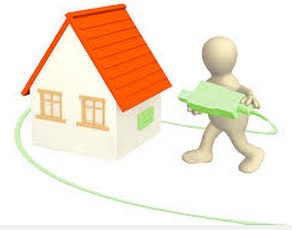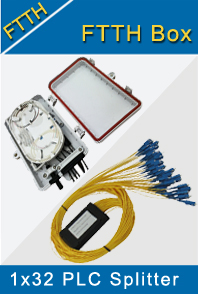-

- Sopto Home
-

- Special Topic
-

- FTTH Knowledge
-

- How FTTH Broadband Works?
FTTH Knowledge
- Solving the FTTH Rollout Problem in Multiple Dwelling Units
- WDM PON Introduction FAQ
- A Simple Overview of Optical Power Meter
- ODN is based on PON FTTH Optical Cable Network of the Device
- Using an OTDR to be an Expert in Fiber Link Testing
- How FTTH Broadband Works?
- Connections among Fiber Terminal Boxes & Patch Cables & Pigtails
- Easy to Install a Fiber Terminal Box
- What is Arrayed Waveguide Grating?
SOPTO Special Topic
Certificate



Guarantee
Except products belongs to Bargain Shop section, all products are warranted by SOPTO only to purchasers for resale or for use in business or original equipment manufacturer, against defects in workmanship or materials under normal use (consumables, normal tear and wear excluded) for one year after date of purchase from SOPTO, unless otherwise stated...
Return Policies
Defective products will be accepted for exchange, at our discretion, within 14 days from receipt. Buyer might be requested to return the defective products to SOPTO for verification or authorized service location, as SOPTO designated, shipping costs prepaid. .....
Applications

Sopto supply the best FTTH solutions for your network!
SOPTO Products
- Fiber Optic Transceiver Module
- High Speed Cable
- Fiber Optical Cable
- Fiber Optical Patch Cords
- Splitter CWDM DWDM
- PON Solution
- FTTH Box ODF Closure
- PCI-E Network Card
- Network Cables
- Fiber Optical Adapter
- Fiber Optical Attenuator
- Fiber Media Converter
- PDH Multiplexers
- Protocol Converter
- Digital Video Multiplexer
- Fiber Optical Tools
- Compatible
Related Products
Performance Feature
FTTH Knowledge
Recommended

How FTTH Broadband Works?
Stop and think how your Internet usage has evolved during the last few years. If you're like most people, you will do, and looking forward to more online interaction, such as increasing rich media and upload and download images and video.
More large files are moving across the cyberspace network these days, and experts expect that trend will only increase. In January 2008, the study by the Discovery Institute estimates new technologies will drive Internet traffic up by 50 times its current rate within the next 10 years.
The pressure for better connectivity is one of the main reasons providers and users to view its fiber to the home broadband connections as a potential solution.
FTTH broadband connections refer to fiber optic cables connection for individual residences. Such optical based system can provide large amounts of digital information, telephone, video, data, and so on, more efficiently than traditional copper coaxial cable for about the same price. FTTH premises depend on both active and passive optical networks to function.
FTTH Fiber Cable connection is a reality of more than 1 million consumers in the United States, and more than 6 million Japanese and 10 million global to enjoy its benefits, broadband property according to the magazine. Many people think that the FTTH technology standard to predict network connection can solve traffic congestion.
More than 10 million homes worldwide already have fiber to the home broadband connections because the technology holds many advantages over current technologies.
What are the advantages to FTTH broadband connections?
A key advantage to FTTH - also called FTTP, for "fiber to the premises" broadband - is that it provides for far faster connection speeds and carrying capacity than twisted pair conductors, DSL or coaxial cable. Experts at the FTTH Council say fiber-to-the-home connections are the only technology with enough bandwidth to handle projected consumer demands during the next decade reliably and cost effectively. The technology is already, affordable, as businesses around the world are demonstrating by getting into the business as they speculate on consumer demand.
Fiber has a virtually unlimited bandwidth coupled with a long reach, making it "future safe," or a standard medium that will be in place for a long time to come.
However, greatly improving the bandwidth cost and current technology. According to the FTTH Council, cable companies spent about $84 billion to line family ten years ago, but it costs less in today's dollars line those houses with FTTH technology.
FTTH will be able to handle even the future Internet use some experts see the future. Technologies such as 3D holographic high definition television and games will one day become daily necessities of families all over the world. FTTH will be able to handle estimated 30-gigabyte-per-second needs of such equipment.
Active and Passive Optical Networks
There are two important types of systems that make FTTH broadband connections possible. These are active optical networks and passive optical networks. Each offers ways to separate data and route it to the proper place, and each has advantages and disadvantages as compared to the other.
An active optical system uses electrically powered switching equipment, such as a router or a switch aggregator, to manage signal distribution and direct signals to specific customers. This switch opens and closes in various ways to direct the incoming and outgoing signals to the proper place. In such a system, a customer may have a dedicated fiber running to his or her house.
A passive optical network, on the other hand, does not include electrically powered switching equipment and instead uses optical splitters to separate and collect optical signals as they move through the network. A passive optical network shares fiber optic strands for portions of the network. Powered equipment is required only at the source and receiving ends of the signal.
Active and Passive Optical Networks of the advantages and disadvantages
Passive optical networks, or PONs, have some distinct advantages. They're efficient, in that each fiber optic strand can serve up to 32 users. PON has a low building cost relative to active optical networks along with lower maintenance costs. Because there are few moving or electrical parts, there's simply less that can go wrong in a PON.
Passive optical networks also have some disadvantages. They have less range than an active optical network, meaning subscribers must be geographically closer to the central source of the data. PONs also make it difficult to isolate a failure when they occur. Also, because the bandwidth in a PON is not dedicated to individual subscribers, data transmission speed may slow down during peak usage times in an effect known as latency. Latency quickly degrades services such as audio and video, which need a smooth rate to maintain quality.
Active optical networks offer certain advantages, as well. Their reliance on Ethernet technology makes interoperability among vendors easy. Subscribers can select hardware that delivers an appropriate data transmission rate and scale up as their needs increase without having to restructure the network.
Active optical networks, however, also have their disadvantages. They require at least one switch aggregator for every 48 subscribers. Because it requires power, an active optical network inherently is less reliable than a passive optical network.




